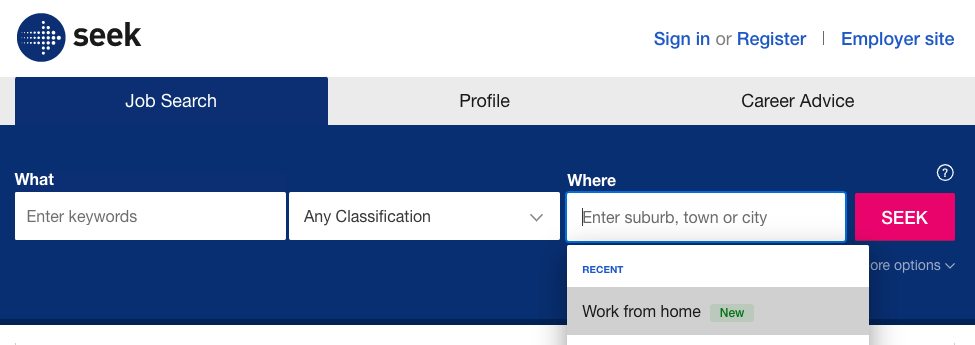In the same way COVID-19 has sped up the e-commerce trend, it had challenged the conventional view that offices are critical to productivity, culture, and securing top talent. At the beginning of Alert Level 3 in March, we saw businesses scramble to set up remote working arrangements for their employees. But despite the less than gentle shove into remote work, businesses and employees rose to the occasion. Stunningly.
In Perceptive’s post-lockdown survey, 72 per cent of New Zealanders believed they were either just as productive or more productive at home as they were in the office. Moreover, two-thirds wanted to continue working from home or have flexible office days.

Employees are hungry for more flexible ways of working
Even before COVID-19 happened, flexible working was fast becoming a trend. In 2018, Perpetual Guardian made headlines when they introduced the 4-day work week after a successful trial earlier that year that saw employees’ work-life balance rise from 54 per cent to 78 per cent, their stress levels decrease by 7 per cent, and their stimulation, commitment and a sense of empowerment ‘improve significantly’. In 2019, flexible work ranked in the top 10 most important features New Zealand employees look for in a workplace.
Read more: 10 Pillars of Employee Experience
Results from the Survey of working life: 2018 also found that employees with flexible hours reported higher levels of satisfaction with both their job and their work-life balance than those without. Now, in the wake of COVID-19, Kiwis have shown that a remote workforce is not only possible, but productive.
Employers are adapting too
In the Survey of Working Life: 2018, one-third of New Zealanders stated they worked from home. Compared to the US, which only had 3.4%[1] of its workforce working from home before COVID-19, New Zealand was in an arguably better position than many to adjust to the restrictions brought about by the pandemic.
Since the beginning of COVID-19 in New Zealand, enthusiasm to work from home has shot up as remote working becomes normalised. On May 13, Perceptive’s COVID-19 Insights Tracker revealed 33 per cent of Kiwis want to work from home more often[2]. And businesses are catching on, so much so that Seek recently added a new ‘work from home’ category in their location tab. At the time of writing this, this category had a listing of over 200 WFH jobs in New Zealand and 1,500 in Australia. Less surprising, these roles are largely office-based, including administration, customer support, marketing, consulting, finance and data entry.

However, despite all the pros of working from home, there is one big caveat. It works best when it’s voluntary. When it’s forced upon us, the results are less positive overall.
Remote working in the age of coronavirus
Pre COVID-19 research on remote working often touts its benefits: workers are more productive, more engaged, less absent and more likely to stay with a business long term. However, consider that much of this research was based on workers who chose to work from home and had workplaces and managers who trusted them to do so. Additionally, these staff did not always work from home full-time; some only worked from home a day or two a week.
As it turns out, it can be a different kettle of fish if working from home no longer becomes a choice.
Research in done in China during the pandemic found that people who were required to work from home experienced four key issues:
- Loneliness—they felt disconnected from their colleagues.
- Procrastination/distraction—many were WFH for the first time and didn’t have learned routines and structure to help their concentration and focus.
- Work/home conflict—with schools also being shut, many workers struggled to accommodate both their families and their work life.
- Poor communication quality—such as poor or unstable internet, hardware issues and poor communication platforms.
These findings were echoed in our own New Ways of Working survey, which revealed that while the majority of our staff thrived in their work from home setting, it wasn’t without its hiccups.
Adapting to the new reality
As we move into this new way of working, it is critical that businesses consider and address these working from home issues (where possible) if they are present. The recent cluster of new cases on Auckland has highlighted that future lockdowns are not only possible but likely in the foreseeable future. Being aware of the common problems your employees experience while working from home can help you ensure your workers have a better experience and remain productive wherever they are.
There's no one-size-fits-all when it comes to working from home. Take time to understand how your staff prefer to work so you can create flexible working solutions specific to your business and industry. Do this and your staff will be healthier, happier and more productive in the long-term.
Want to understand how your employees felt about working from home? A New Ways of Working Diagnostic can help you identify issues, find solutions and promote new learnings across your team to help your business adapt to the new normal.
About the author
Ange Dunn – Business Director
 Part of Perceptive’s Client Services team, Ange takes the world of data and insights and spins it into gold in the form of actionable strategies for clients. Ange has seen seven years in the insights field in Australia and the UK, and has experience working within the toy industry, in FMCG and with major loyalty card programmes. Being familiar with both the client and agency side of the insights and customer intelligence industry gives her an edge, which helps her excel at bringing client projects from ideation to full fruition.
Part of Perceptive’s Client Services team, Ange takes the world of data and insights and spins it into gold in the form of actionable strategies for clients. Ange has seen seven years in the insights field in Australia and the UK, and has experience working within the toy industry, in FMCG and with major loyalty card programmes. Being familiar with both the client and agency side of the insights and customer intelligence industry gives her an edge, which helps her excel at bringing client projects from ideation to full fruition.
[1] Simovic, D. The Ultimate List of Remote Work Statistics – 2020 Edition. smallbizgenius. Oct 28, 2019.
[2] Perceptive. COVID-19 Insights Tracker, 13 May 2020.
